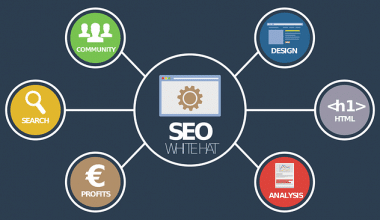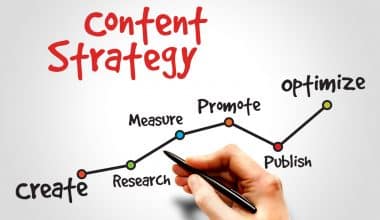Personal selling methods, which emphasize a personal approach to sales, play an essential part in creating relationships with clients. Personal selling tactics are used by sales departments or entrepreneurs to explain the benefits of a product or service, answer client inquiries, and resolve consumer concerns. Understanding how personal methods operate and how to employ them will help your sales pitches be more effective. In this post, we define the personal selling process, discuss its marketing methods, explain how it may add value to your organization, and provide an example.
What is Personal Selling?
Personal selling is a marketing approach that entails one-on-one engagement with prospective clients to sell a product or service. While personal selling is a type of marketing, there are numerous important distinctions between the two. Personal selling and marketing are both vital components of developing a brand strategy, but their tactics and goals differ.
Marketing encompasses a broader range of activities aimed at raising awareness of a company’s products or services, generating interest among potential customers, and ultimately leading to sales. Advertising, public relations, content marketing, email campaigns, social media, and other strategies can all be used in marketing.
Personal selling is a face-to-face selling strategy between a sales representative and a prospective consumer. Personal selling is when a sales representative attempts to persuade a potential consumer to buy your product or service. This strategy aids in the development of customer relationships and ensures customer satisfaction.
Why is Personal Selling important?
Personal selling is significant because it involves a direct connection between a salesperson and a prospective customer to persuade them to buy a product or service or to increase revenue through customization.
Personal selling is often done in person, although it can also be done over the phone, video conferencing, or other communication methods. Also, personal selling focuses on developing relationships with clients and personalizing sales approaches to their specific requirements and preferences.
A vehicle salesperson meeting with a potential customer to show them several car models and features, a real estate agent giving a prospective buyer a tour of a property, or a financial advisor meeting with a client to discuss investment alternatives are all examples of personal selling. Personal selling can also assist you in developing a personal brand strategy.
The goal of marketing is to reach as many people as possible and generate interest and demand for a product or service, which can be accomplished through the use of personal selling strategies.
Types of Personal Selling
Personal selling is classified into numerous types, each with its own set of characteristics and goals. Here are a few examples of the most prevalent types:
#1. Retail sales:
Personal selling of this type is the most popular. It entails professional salespeople offering products to consumers directly in retail locations or online. The salesperson is in charge of explaining the product’s characteristics and benefits, answering any questions the consumer may have, and closing the deal. A retail salesperson could work at a clothing store, an electronics store, or a vehicle dealership.
#2. Business-to-business (B2B) sales:
B2B sales involve the sale of goods or services to other businesses. The salesperson may need to collaborate with a team to understand the business’s demands and modify their sales pitch to match those needs. A salesperson selling office equipment to a firm or a sales professional selling industrial machinery to a manufacturer are both examples of B2B sales.
#3. Telemarketing:
Telemarketing entails sales representatives making phone calls to potential customers. The salesperson is responsible for presenting a convincing sales proposal and overcoming any objections raised by the consumer. A salesman phoning customers to sell them credit cards, insurance policies, or service subscriptions is an example of telemarketing.
#4. Direct selling:
Direct selling entails salespeople selling products or services to customers directly in their homes. Typically, the salesman will display the product, discuss its features and benefits, and assist the consumer in placing an order. A salesperson selling cosmetics, kitchenware, or cleaning supplies to consumers in their homes is an example of direct selling.
#5. Consultative selling:
Salespeople that use consultative selling operate as advisers to their customers, assisting them in identifying their needs and giving solutions to suit those needs. The salesman may be required to conduct a needs analysis, deliver product demos, and provide the customer with personalized solutions. A salesperson offering software solutions to a corporation or a financial advisor assisting a client in planning for retirement are both examples of consultative selling.
Personal Selling Process
Each step in the personal selling process is designed to take the potential consumer closer to making a purchase. Understanding these personal selling strategies is critical for optimizing the sales process.
Salespeople may efficiently lead prospects through the customer experience and boost their chances of making a successful sale by following these steps.
#1. Prospecting
So, what is the first stage in the process of personal selling?
Prospecting is the initial step in the personal selling process. Identifying potential clients who may be interested in the product or service being sold is part of this process. Prospecting can be accomplished through a variety of methods, including referrals, cold calling, networking events, and social media.
#2. Pre-approach
After identifying potential consumers, the salesman must conduct some study and preparation before establishing contact. This includes learning about the customer, such as their wants, preferences, and purchasing habits, as well as learning about the product or service being sold.
#3. Approach
The salesman initiates contact with the potential customer during the approach stage. The goal is to develop a connection with the customer and produce a favorable first impression. To engage the consumer and initiate a conversation, the salesman may utilize a warm greeting, a compliment, or an opening question.
#4. Presentation
The salesman will proceed to the presentation stage once they have developed a rapport with the consumer. This entails displaying and discussing the product or service being offered, as well as its characteristics, benefits, and value proposition.
To demonstrate the benefits of the product and encourage the consumer to make a purchase, the salesman may utilize numerous presentation strategies such as product demos, testimonials, or case studies.
#5. Overcoming objections
The potential buyer may raise objections or concerns about the goods or services being sold during the presentation. The salesperson must be ready to respond to these arguments and deliver suitable responses that assuage the customer’s concerns.
This could include providing more information, proposing solutions, or clearing up any misconceptions the customer may have.
#6. Closing
Closing the transaction is the final step in the personal selling process. This includes soliciting the customer’s business and completing the deal. By the end, you should have developed a personal connection with the customer.
To convince the consumer to make a purchase, the salesperson may use numerous closing strategies such as offering a discount, generating a sense of urgency, or emphasizing the benefits of the product or service.
It is crucial to realize that not every sales interaction will result in a sale, but salespeople may raise their chances of success, create deeper relationships with clients, and improve the customer experience by knowing the personal selling process.
Personal Selling Marketing
Personal selling marketing methods might differ depending on the product you offer and the type of customer you contact with. Consider combining strategies for a more comprehensive plan rather than depending on a single method. The following are seven personal selling marketing strategies:
#1. Describe the benefits of the product
The benefits of a product are frequently its most powerful selling point. In this strategy, you learn about the customer’s purchase motivations and explain how the product meets their demands. You can adapt the message depending on the customer or if the conversation shifts. For example, if a customer wants to know more about the efficiency of a product but keeps referring to the product’s material, you could modify your response to emphasize the product’s quality and longevity.
#2. Demonstrate the product
Demonstrating the product can be a convincing method in various instances. This may work best with extremely sophisticated or complex products. You can discuss how the product solves an issue while you explain how it works. Demonstrating to a homeowner how the elements of a home alarm system function to keep them safe is one example.
#3. Start a conversation
Personal selling marketing methods entail working directly with the consumer to identify and answer their concerns. You can learn about the customer’s personality and purchasing habits by conversing with them. This assists you in guiding the customer to a conclusion. A conversational tactic could involve making product comparisons or explaining why the greater price signals quality or craftsmanship, depending on the customer’s interests or reservations.
#4. Serve as a consultant
When you share your knowledge with customers, you win their trust by demonstrating your knowledge of a product or service. Learning about the customer’s challenges and suggesting solutions might help you develop stronger relationships. This may lead the customer to seek your advice on future purchases. A first-time buyer, for example, may become a repeat customer because your previous advice was helpful, and they may prefer to consult with you again before making another purchase.
#5. Customer satisfaction should be prioritized
Share your accomplishments to gain consumer trust and loyalty. This is especially useful for salespeople who assist consumers in making large purchases such as homes or automobiles. Consider generating a list of customer reviews or testimonials to reassure new customers of your passion and ability. Additionally, make sure to solicit input from new consumers to improve your services or add to your list of recommendations.
#6. Tell a story
Share a personal experience to persuade the buyer to make a purchase. Your narrative could be about how the product affected your life or about another customer’s success. This lets you connect with your customer and create a scenario in which they may see themselves utilizing the goods. Because storytelling has an emotional appeal, this method may be useful for products that address a pressing issue or have sentimental importance.
#7. Consider consumer behavior
Personal selling tactics, because of their intimate connection to consumers, can allow salespeople to quickly react when competition arrives or market trends alter. It is beneficial to keep an eye on market conditions for emerging competition. This enables you to develop your personal selling plan to reach new customers and keep existing ones.
How Does Personal Selling Add Value?
Personal selling is a marketing method in which salespeople contact directly with consumers and potential customers to promote products or services and persuade them to make a purchase. Personal selling can add value in a variety of ways, including:
#1. Relationship development:
Personal selling enables salespeople to develop a personal relationship with customers, which can result in improved loyalty and repeat business. Salespeople can learn more about their customers’ requirements and preferences and modify their sales approach accordingly.
#2. Providing information:
Salespeople can provide specific information about products or services to customers, such as features, benefits, and pricing. Customers will be more confident in the product or service if they can make informed purchasing selections.
#3. Overcoming obstacles:
Customers can overcome objections or concerns about a product or service by addressing their problems and providing answers or alternatives.
#4. Customizing solutions:
Salespeople can collaborate with customers to create customized solutions that address their unique needs and preferences. Customers will be more satisfied with their purchase, increasing the possibility of repeat business.
#5. Cross-selling and upselling:
Personal selling can also be used to upsell or cross-sell consumers on products or services they may not have explored before. This can raise the value of each sale, resulting in more income for the organization.
Overall, personal selling can add value by giving clients with personalized attention, knowledge, and solutions that fit their demands, while also improving corporate sales and revenue.
Example of Personal Selling
Personal selling is one of the most classic commercial sales tactics. Also, personal sales began in the history of sales when salesmen performed face-to-face interactions with prospective clients, enquiring about their needs and want and recommending their company’s offers.
Personal sales can now be seen in:
- Retail Stores: Retail stores such as Walmart, Ikea, and others employ salespeople who assist clients in selecting the best product for their specific needs and desires.
- Door-to-Door Sales: Some B2C and B2B companies (such as Gillette) send salespeople to prospective customers’ homes and offices to educate them about the company’s services and urge them to use or buy them.
- B2B Outreach: B2B salespeople frequently reach out to prospective clients online or offline and employ face-to-face communication to close sales.
Personal Selling Benefits and Drawbacks
Like all other aspects of the promotion mix, has Benefits and Drawbacks.
Benefits
- Conveys more information: Personal selling helps businesses communicate more information than any other method of promotion. Understanding the consumers’ wants, identifying an opportunity to meet them, and capitalizing on them by creating a relationship with them while enticing them to try the company’s product are all important.
- Creates more impact: It has a greater impact because the salesman aids the buyer throughout the buying process, answering questions and resolving doubts.
- Supports two-way communication: Personal selling, unlike other promotional tactics such as advertising or public relations, allows clients to engage with the company and clear their doubts before making a purchase.
- Increases customer relationship: Personal sales endure longer, entail interpersonal interactions, and rely on trust between the salesperson and the consumer.
Drawbacks
- Expensive: Because personal selling includes person-to-person interaction, it is significantly more expensive than other types of sales tools because a human can only approach a limited number of prospects in a given period
- Labor intensive: Personal sales demand a lot of effort from the salesman, and it may take a long time and a lot of resources to turn a prospect into a final customer.
- Limited reach: Personal sales has a restricted reach because it is a one-to-one promotional strategy, as opposed to other strategies such as advertising or public relations.
What Is a Personal Selling Strategy?
Personal selling is a marketing strategy that involves the use of salespeople to interact directly with customers and potential customers, promote products or services and persuade them to make a purchase.
What Are the Most Commonly Used Personal Selling Process?
The most commonly used personal selling process is the seven-step process, which includes the following steps:
- Prospecting
- Pre-approach
- Approach
- Presentation
- Handling objections
- Closing
- Follow-up
What Are the Three Major Aspects of Personal Selling?
The three major aspects of personal selling are:
- Building relationships: Personal selling is all about building relationships with customers.
- Communication: Effective communication is essential in personal selling.
- Persuasion: The ultimate goal of personal selling is to persuade customers to make a purchase.
What Are the 5 Stages of Personal Selling?
The five stages of personal selling are:
- Preparation
- Approach
- Presentation
- Handling objections
- Closing
By following these stages, salespeople can build trust with customers, communicate the value of the product or service, and persuade customers to make a purchase.
Conclusion
Personal selling is a powerful marketing strategy that involves the use of salespeople to interact directly with customers and potential customers, it promotes products or services and persuades them to make a purchase. By building relationships, communicating effectively, and using persuasion techniques, salespeople can tailor their sales approach to each customer and increase the likelihood of a sale.
However, personal selling requires a significant investment of time and resources, as well as a skilled sales team. It may not be a feasible strategy for all businesses, particularly those that operate on a low budget or have a limited customer base.
Overall, personal selling can be an effective way to build relationships with customers, understand their needs and preferences, and persuade them to make a purchase. By following a structured process and focusing on building relationships, communication, and persuasion, salespeople can increase their chances of success and drive revenue for their businesses.
- WHAT IS CUSTOMER SUPPORT: Definition, Types, and Benefits
- How Customer Support Can Increase Customer Satisfaction
- CUSTOMER FEEDBACK: The Only Guide You Will Ever Need
- Sales Skills: 20+ Important Skills to Have In 2023.
- WHAT IS CUSTOMER SERVICE ASSOCIATE: Meaning, Duties, Salary & Guide
- Customer Service Representative Salary in 2023
- WHAT IS WEWORK: What Is It & How Does It Work?






